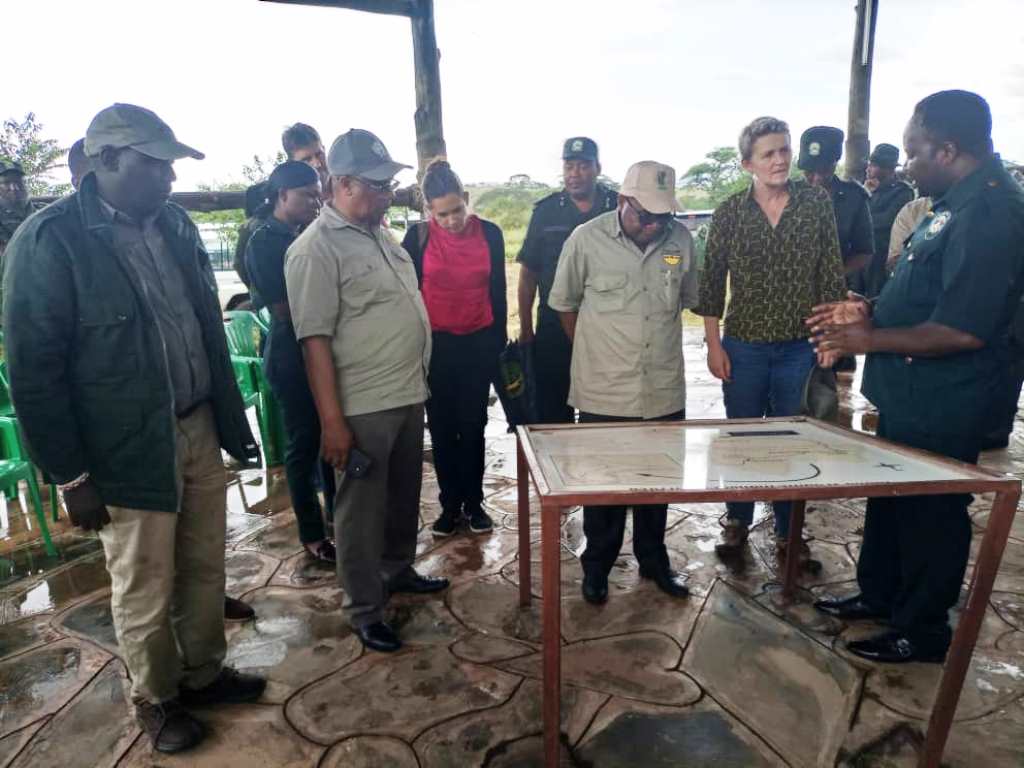AfricaPress-Tanzania: THE increasing number of livestock especially cows seen roaming in the villages located close to Ikona Wildlife Management Area(WMA) is worrying, Minister for Natural Resources and Tourism, Dr Damas Ndumbaro observed here recently.
Speaking shortly after visiting the WMA’s visitors centre, the Minister said he was concerned with the number of livestock’s and increasing population of people and human settlement’s around the WMA .
“I’m concerned with the livestock that we are seeing there,” the minister said, referring to Robanda village, which borders the WMA that forms integral part of the Serengeti ecosystem in Western Serengeti
Tourism stakeholders are also worried with the increasing number of livestock reportedly grazing in the WMA areas, warning that if the situation will not be checked it may have serious effects on tourism business.
“The situation is almost out of control, something should be done as soon as possible,” a tourism stakeholder in western Serengeti said.
Ecologically, the WMA besides being home to beautiful animals like giraffes, elephants, buffalo, wildebeest and zebra is an important wildlife corridor in the western Serengeti.
Therefore, the minister cautioned the WMA top officials including its board members to take precautionary measures against the increasing population of people and livestock in the surrounding villages.
The Ministry’s Permanent Secretary, Dr Allan Kijazi, and other top officials from the Wildlife Department, Tanzania Wildlife Research Institute (TAWIRI) were present when the minister was expressing his concern.
This was Dr Ndumbaro’s first working visit at the WMA since he was appointed to lead the ministry.
The minister described Ikona WMA which covers 242 square kilometres as an amazing wildlife management area that should be exclusively used for tourism activities to foster sustainable conservation and local development.
Dr Ndumbaro disagreed with a response by Ikona WMA Secretary Mr Yusuph Manyanda that the livestock were outside the WMA borders.
“It seems you have not seen the problem or you are part of the problem,” the minister told the Ikona WMA secretary.
Dr Ndumbaro instructed proper land use plans to protect the WMA, which generates millions of money from tourism firms including Grumeti Reserves.
The money goes in rural villages that formed the WMA to finance development projects in areas of education, health and water.
The villages include Robanda, Park Nyigoti, Natta Mbiso, Nyichoka, Nyanungu, Bokore, Makundusi.
Proper land use plans, Minister Ndumbaro said could help to mitigate human/wildlife conflicts in the villages and support sustainable conservation and development.
Dr Ndumbaro further urged the WMA management to make god use of the revenue they earn from investors, donors and the government.
“You are sitting on gold (Ikona WMA) and the only task you have is to protect this gold,” Dr Ndumbaro emphasised.
He said some WMA’s in the country end up generating about 50m/- annually compared to Ikona which has been earning up to 2.6b/- before Covid-19 pandemic.
“In 2019/2020 your revenue was over 900m/-, if you cry what will a WMA that earns 50m/- per year say,” the minister wondered.
A report by the WMA to the minister whose copy was made available to this newspaper shows that the WMA generated more than 8.5bn/- in the last five years (between 2015 to 2020).
A large part of the WMA’s income comes from Grumeti Reserves, an ecotourism company that operates several world-class lodges in Western Serengeti.
The American investor (Grumeti Reserves) conducts photographic tourism in the WMA.







